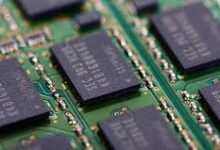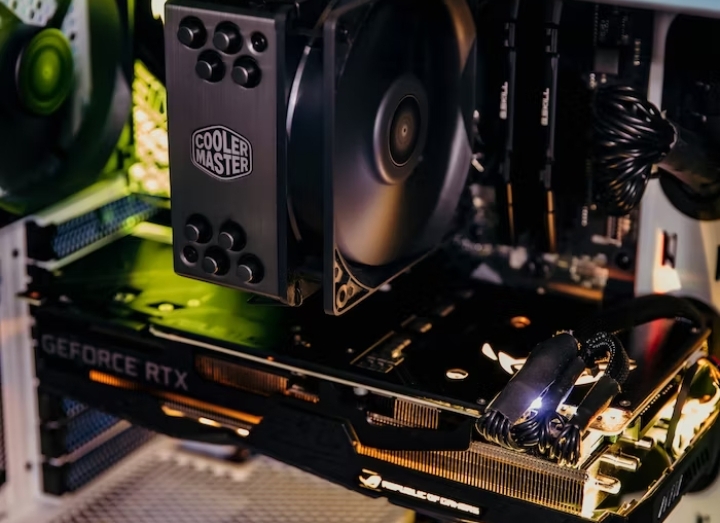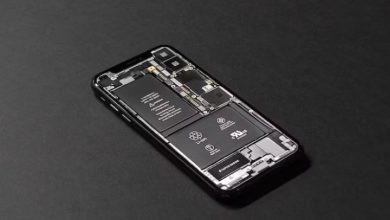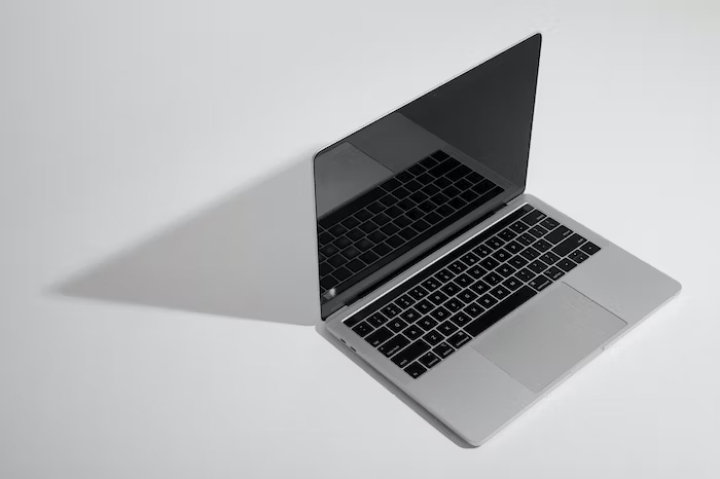What Is the Difference Between RAM SPD Speed and RAM Tested Speed?

Have you ever wondered about the various factors that contribute to the performance of your computer’s RAM? Two crucial aspects to consider are the RAM SPD speed and the RAM tested speed. While they may sound similar, they are distinct elements that affect the overall efficiency and responsiveness of your system. In this article, we will explore the key differences between RAM SPD speed and RAM tested speed, their significance, and how to optimize them for better performance.
Introduction
Before diving into the differences between RAM SPD speed and RAM tested speed, let’s briefly understand what RAM is and why it plays a vital role in your computer’s performance. RAM, or Random Access Memory, is a type of computer memory that allows quick access to data, enabling your system to run multiple applications simultaneously. It acts as a temporary storage space for the data that your computer needs to access quickly.
Understanding RAM SPD Speed
RAM SPD speed refers to the speed specified in the Serial Presence Detect (SPD) data of the RAM module. The SPD contains information about the RAM module, including its maximum operating frequency, timings, and voltage requirements. The RAM SPD speed indicates the highest frequency at which the RAM module is designed to operate reliably.
Understanding RAM Tested Speed
On the other hand, RAM tested speed refers to the actual speed at which the RAM module is tested and guaranteed to function by the manufacturer. It is the result of rigorous testing performed by the manufacturer to ensure that the RAM module performs reliably at the specified frequency and timings.
Key Differences between RAM SPD Speed and RAM Tested Speed
The main difference between RAM SPD speed and RAM tested speed lies in their purpose and reliability. While the RAM SPD speed indicates the maximum supported frequency, it does not guarantee that the RAM module will perform flawlessly at that speed. On the other hand, the RAM tested speed provides a guarantee from the manufacturer that the module has been thoroughly tested and will perform reliably at the specified speed.
Factors Influencing RAM SPD Speed
Several factors can influence RAM SPD speed. One significant factor is the compatibility between the RAM module and the motherboard. It is essential to ensure that the RAM module is compatible with the motherboard’s memory slots and supports the desired frequency. Other factors include the quality of the RAM module itself, the voltage supplied to the RAM, and the effectiveness of the cooling system. Higher-quality RAM modules and adequate cooling can help achieve better SPD speeds.
Factors Influencing RAM Tested Speed
Similar to RAM SPD speed, several factors can influence RAM tested speed. The motherboard’s capabilities, such as its memory controller and BIOS settings, play a crucial role. Additionally, the quality of the RAM module, the voltage supplied, and the overall system stability also impact the tested speed. It is important to consider these factors when aiming for optimal performance.
Importance of RAM SPD Speed
RAM SPD speed is important because it determines the maximum frequency at which the RAM module can operate reliably. Higher SPD speeds can result in faster data transfer rates and better overall system performance. However, it’s important to note that achieving the maximum SPD speed may require proper compatibility with the motherboard and other components.
Importance of RAM Tested Speed
RAM tested speed is equally important as it ensures the stability and reliability of the RAM module at a specific frequency and timings. By guaranteeing a tested speed, manufacturers provide users with confidence that the RAM will perform as expected. This is especially crucial for demanding tasks such as gaming, video editing, or running resource-intensive applications.
How to Check RAM SPD Speed
To check the SPD speed of your RAM module, you can follow these steps:
Open your computer’s BIOS settings by restarting your computer and pressing the designated key (such as Del or F2) during the boot process.
Navigate to the “Memory” or “RAM” settings in the BIOS.
Look for the “SPD” or “Serial Presence Detect” section.
Here, you should find information about the SPD speed of your RAM module, including the supported frequencies and timings.
How to Check RAM Tested Speed
To check the tested speed of your RAM module, you can use various software tools available online. These tools can provide detailed information about your system’s RAM, including the tested speed. Some popular software options include CPU-Z, HWiNFO, and Speccy. Download and install the tool of your choice, and it will display the tested speed along with other RAM specifications.
Optimal RAM SPD Speed for Different Applications
The optimal RAM SPD speed can vary depending on the intended usage of your computer. Here are some general recommendations:
Everyday Computing: For regular web browsing, document editing, and light multitasking, RAM modules with speeds ranging from 2133MHz to 2666MHz should suffice.
Gaming: For gaming enthusiasts, RAM modules with speeds between 3000MHz and 3600MHz are recommended. These higher speeds can provide smoother gameplay and quicker loading times.
Content Creation and Video Editing: Professionals working with multimedia content can benefit from RAM modules with speeds above 3600MHz. These higher speeds facilitate faster rendering and processing of large files.
Optimal RAM Tested Speed for Different Applications
Similar to SPD speed, the optimal RAM tested speed depends on the specific application’s requirements. Here are some guidelines:
Gaming: For optimal gaming performance, RAM modules with tested speeds between 3000MHz and 3600MHz are widely used. These speeds ensure smooth gameplay and minimize frame drops.
Video Editing and Rendering: Professionals working with video editing and rendering software can benefit from RAM modules with higher tested speeds, typically ranging from 3600MHz to 4800MHz. These speeds help accelerate processing and reduce rendering times.
Virtual Machines and Server Applications: In scenarios where virtualization or running server applications is involved, RAM modules with higher tested speeds, such as those above 4800MHz, can enhance overall performance and multitasking capabilities.
Overclocking RAM SPD Speed can be a way to push the limits of your RAM module’s performance beyond its specified SPD speed. It involves adjusting the frequency and timings in the BIOS settings to achieve higher speeds. However, it’s important to note that overclocking can void warranties and may lead to instability or system crashes if not done correctly.
If you decide to overclock your RAM SPD speed, here are a few steps to follow:
Enter your computer’s BIOS settings by restarting your computer and pressing the designated key (such as Del or F2) during the boot process.
Navigate to the “Memory” or “RAM” settings in the BIOS.
Look for options related to frequency, timings, and voltage.
Increase the frequency incrementally, ensuring system stability after each adjustment. Monitor the temperature of your RAM and make sure it stays within safe limits.
Test the stability of your system by running stress tests or memory testing software like Memtest86+.
If the system remains stable, you can continue increasing the frequency until you reach a satisfactory overclock.
It’s crucial to exercise caution while overclocking and be aware of the limitations of your specific RAM module and motherboard. Not all RAM modules are designed for extensive overclocking, and pushing them beyond their limits can lead to reduced lifespan or failure.
Overclocking RAM Tested Speed
Overclocking RAM tested speed involves pushing the RAM module’s performance beyond the speed it has been guaranteed to function reliably. This process requires adjusting the frequency, timings, and voltage settings in the BIOS.
To overclock RAM tested speed, you can follow these general steps:
Enter your computer’s BIOS settings by restarting your computer and pressing the designated key (such as Del or F2) during the boot process.
Locate the “Memory” or “RAM” settings in the BIOS.
Adjust the frequency and timings to higher values incrementally.
Test the stability of your system by running stress tests or memory testing software.
Monitor the temperature of your RAM and ensure it remains within safe limits.
If the system remains stable, continue increasing the frequency and timings until you reach a stable and satisfactory overclock.
Remember that overclocking RAM tested speed carries risks, including reduced lifespan, system instability, and potential data loss. It’s crucial to research your specific RAM module, consult manufacturer guidelines, and proceed with caution. It’s also recommended to monitor system temperatures and maintain adequate cooling to ensure optimal performance.
Conclusion
In conclusion, understanding the difference between RAM SPD speed and RAM tested speed is essential for optimizing your computer’s performance. While SPD speed indicates the maximum supported frequency, tested speed guarantees the RAM module’s reliability at specific settings. Factors such as compatibility, quality, and system stability influence both SPD speed and tested speed.
By checking and optimizing these speeds, you can enhance your system’s responsiveness and efficiency, whether for everyday computing, gaming, or resource-intensive tasks. However, it’s important to consider the limitations of your hardware, exercise caution when overclocking, and maintain proper cooling to ensure the longevity and stability of your system.
FAQs
Q1: Can I mix RAM modules with different SPD speeds?
Yes, you can mix RAM modules with different SPD speeds. However, keep in mind that all modules will operate at the speed of the slowest module in the system. It’s generally recommended to use identical RAM modules for optimal performance.
Q2: Is RAM SPD speed the only factor affecting system performance?
No, RAM SPD speed is just one of the factors affecting system performance. Other factors, such as CPU, storage, and graphics card, also play significant roles. A balanced configuration is necessary to achieve optimal performance.
Q3: Can I manually adjust the SPD speed of my RAM module?
The SPD speed of a RAM module is predetermined by the manufacturer and is not typically adjustable. It is based on the specifications set for that specific RAM module. However, you can adjust the RAM frequency and timings within the range specified by the module’s SPD data in the BIOS settings.
Q4: Will overclocking RAM SPD speed void the warranty?
Yes, overclocking RAM SPD speed is generally considered an overclocking practice and may void the warranty provided by the RAM manufacturer. It is important to check the warranty terms and conditions before attempting any overclocking.
Q5: Does higher RAM SPD speed always result in better performance?
Not necessarily. While higher SPD speed can potentially lead to better performance, other factors such as CPU, storage speed, and software optimization also contribute to overall system performance. It is important to have a balanced configuration for optimal results.
Q6: Can I mix RAM modules with different tested speeds?
Yes, you can mix RAM modules with different tested speeds. However, similar to mixing SPD speeds, the modules will operate at the speed of the slowest module in the system. It is generally recommended to use identical RAM modules for consistency.
Q7: Should I prioritize RAM SPD speed or RAM tested speed for gaming?
Both RAM SPD speed and RAM tested speed are important for gaming performance. Higher SPD speed can provide a potential performance boost, while tested speed ensures stability. It is advisable to choose RAM modules with both high SPD and tested speeds for optimal gaming performance.
Q8: How can I ensure stable overclocking of RAM tested speed?
To ensure stable overclocking of RAM tested speed, it is crucial to gradually increase the frequency and timings while testing for system stability after each adjustment. Running stress tests and monitoring system temperatures can help identify any issues and ensure a stable overclock.
Q9: Can I revert back to the default SPD speed after overclocking?
Yes, you can revert back to the default SPD speed by resetting the BIOS settings to their default values or by manually adjusting the RAM frequency and timings to match the SPD specifications of the RAM module.
Q10: What are the potential risks of overclocking RAM SPD speed or tested speed?
The potential risks of overclocking RAM SPD speed or tested speed include reduced lifespan of the RAM module, system instability, crashes, and potential data loss. It is important to proceed with caution, follow manufacturer guidelines, and ensure adequate cooling when overclocking.
Q11: Is it possible to damage my RAM module by overclocking?
While it is possible to damage your RAM module by overclocking, it is rare if done correctly. However, pushing the RAM beyond its limits or inadequate cooling can lead to instability, system crashes, and potentially permanent damage to the RAM module.
Q12: Should I consult with a professional before attempting to overclock RAM?
If you are unfamiliar with overclocking or have concerns about your specific hardware, it is advisable to consult with a professional or seek guidance from experienced users who have successfully overclocked similar configurations. They can provide valuable insights and help minimize the risks involved.
Q13: Can I use software tools to optimize RAM SPD speed or tested speed?
Software tools can provide information about your RAM module’s SPD speed and tested speed. However, optimizing these speeds typically requires adjustments in the BIOS settings rather than through software alone. It is recommended to consult your motherboard’s manual and follow proper procedures for optimization.
Q14: What should I do if my system becomes unstable after overclocking RAM?
If your system becomes unstable after overclocking RAM, it is recommended to revert back to the previous settings that were stable. Resetting the BIOS to default values or adjusting the RAM frequency and timings to more conservative settings can help restore stability.
Q15: Is it possible to overclock RAM modules with different tested speeds?
Yes, it is possible to overclock RAM modules with different tested speeds. However, it is important to note that each module will have its own limitations and may not overclock equally. When mixing RAM modules with different tested speeds, the system will typically default to the speed of the slowest module. To ensure stability, it is advisable to find a balance and aim for a conservative overclock that all modules can handle. Experimentation and testing are key to finding the optimal overclock for mixed RAM modules.
Remember to monitor system temperatures, conduct stress tests, and ensure the overall stability of your system when overclocking RAM modules with different tested speeds. It is also recommended to refer to your motherboard’s documentation and consult experienced users or professionals for guidance if needed.
By carefully considering the differences between RAM SPD speed and RAM tested speed, understanding their importance, and exploring the possibilities of overclocking, you can make informed decisions to enhance your computer’s performance and optimize your RAM’s capabilities.







